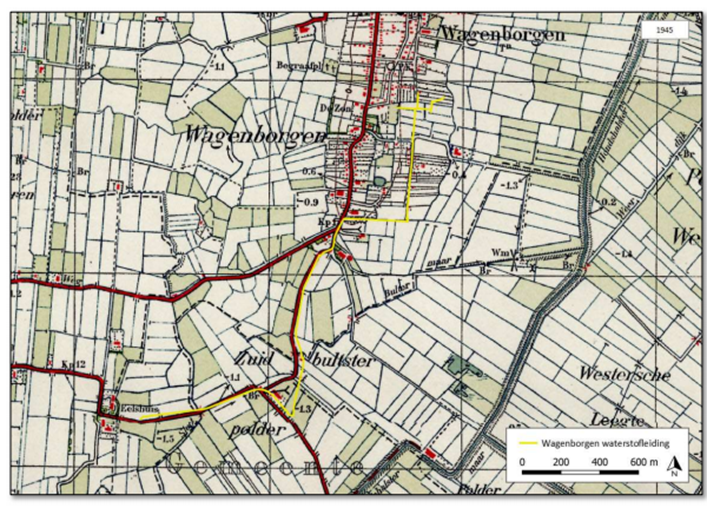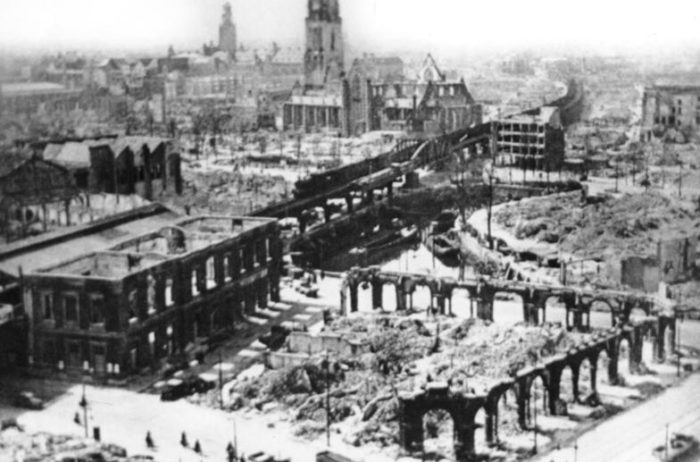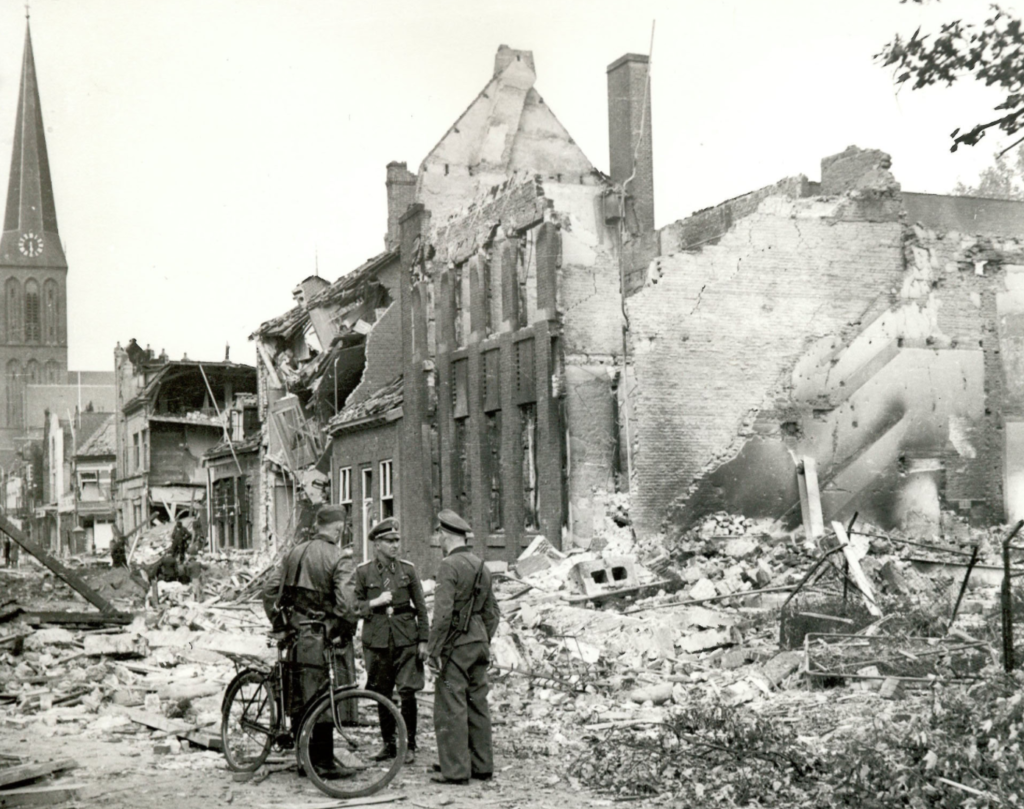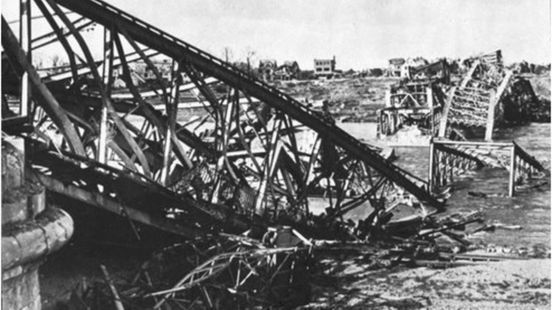- Historical Research
Why Conduct a Historical Investigation?
Safety is essential in construction and infrastructure projects. A Preliminary Investigation of Explosive War Remnants (VOO), also known as a historical preliminary investigation, helps identify potential explosives from World War II. By analyzing the history of a location, risks can be assessed and appropriate safety measures can be taken.
Our Approach
✔ Archival Research – Thorough analysis of historical maps and reports.
✔ Risk Assessment – Evaluation of the potential presence of explosives in the soil.
✔ Site Scan – Identification of risk zones at your project location.
Do you want to ensure your construction site is safe? We provide expert research and advice to minimize risks and help your project proceed safely.
Contact us for a free consultation!


- Regional Explosive Ordnance Detection

Where Are We Active?
Freyr conducts explosive detection operations throughout the Netherlands.
War Remnants in Groningen, Friesland, and Drenthe
In these regions, traces of past wars can still be found, including:
Unexploded Ordnance (UXOs) – Bombs, grenades, and ammunition remain buried in the ground, especially from World War II. This is due to the intense fighting that occurred, particularly in Groningen and Drenthe.
Bunkers and Trenches – Remnants of German defensive structures can still be found in Friesland and Groningen, especially along the coastline and at key strategic points.
Aircraft Wrecks – Numerous air battles and bombing raids took place during World War II. Several crashed Allied and German aircraft have been discovered in the region.
Tank Ditches and Foxholes – Defensive lines were primarily constructed in Drenthe and Friesland, and some of these features are still visible in the landscape today.
- Groningen,Friesland en Drenthe
World War II (1939–1945) in the Northern Netherlands
This region played an important role during the war:
German Occupation (1940–1945)
In May 1940, the Netherlands was invaded by Germany. In Groningen, Friesland, and Drenthe, there was little direct fighting during the invasion, as the Netherlands surrendered quickly.
The region was strategically used for air defense, airfields, and transport.
The Germans built defensive structures along the Wadden Sea and near the Afsluitdijk as part of the Atlantic Wall.
Persecution of Jews and Resistance
Camp Westerbork (Drenthe): This was a transit camp for Jews being deported to concentration camps such as Auschwitz and Sobibor.
People in hiding: Friesland and Drenthe were important areas for people going into hiding, as the countryside and forests provided good hiding places.
Resistance groups: There was active resistance in the Northern Netherlands, including groups like the Knokploegen (armed resistance units) and the LO (National Organization for Aid to People in Hiding).
Battle of Groningen (April 1945)
The city of Groningen was liberated by Canadian forces in April 1945 after heavy fighting against German troops and Dutch SS units.
The city center suffered significant destruction during the battle.
Liberation of Friesland and Drenthe
Friesland was largely liberated without major battles, thanks to the efforts of Frisian resistance groups and Canadian troops.
Drenthe was liberated in April 1945 by Allied forces, with fighting occurring in places such as Assen and Hoogeveen.

- Noord-Holland, Zuid-Holland, Zeeland


War Remnants in North Holland, South Holland, and Zeeland
In these provinces, traces of the war can still be found, including:
Unexploded Ordnance (UXOs): Especially in Zeeland and along the coast, old bombs, grenades, and mines from WWII are still buried underground.
Atlantic Wall Bunkers: The Germans built a coastal defense line, and many bunkers from this line are still present in North and South Holland.
Tank Ditches and Obstacles: These were constructed by both the Germans and the Dutch to slow down potential invasions.
Wrecks of Ships and Aircraft: Off the coast of Holland and especially in Zeeland, the wrecks of Allied and German ships and planes can still be found.
Ghost Villages: For example, the “Displaced Villages” in Zeeland that disappeared due to bombings and flooding.
German Invasion (May 1940)
Battle of the Grebbeberg (Utrecht, near South Holland): One of the few major Dutch defensive battles against the Germans.
Bombing of Rotterdam (May 14, 1940): The Germans bombed the center of Rotterdam, forcing the Netherlands to surrender.
Battle of Zeeland: Dutch and French forces fought together against the Germans but were ultimately forced to retreat. The city of Middelburg was heavily bombed.
Occupation (1940–1945)
Atlantic Wall: The Germans constructed a coastal defense line to prevent Allied invasion. This included bunker complexes and barriers along the beaches.
Resistance: All provinces saw significant resistance activity, including the April–May Strikes (1943) and sabotage operations against German railways.
Battle of the Scheldt (Zeeland, 1944)
Objective: The Allies needed to clear the Scheldt estuary to enable the liberation of Belgium and the Netherlands.
Heavy Fighting: Canadian, British, and Polish forces fought German troops in Zeeland and on the South Holland islands.
Flooding: The Germans destroyed dikes, causing large parts of Zeeland to flood.
Liberation of Zeeland: After fierce battles, the Allies captured Walcheren and Schouwen-Duiveland.
Liberation of the Netherlands (1945)
Western Netherlands was liberated last: German forces surrendered on May 5, 1945, but food drops (Operation Manna and Chowhound) had already begun to aid the starving population in Holland.
Rotterdam and Amsterdam were only liberated after the German capitulation.
- Overijssel, Flevoland


War Remnants in Overijssel and Flevoland
These provinces still contain remnants of World War II, such as:
Unexploded Ordnance (UXOs): Especially in Overijssel, where heavy fighting took place in 1945. Bombs, grenades, and bullets can still be found in the ground.
Aircraft Wrecks: Many Allied and German planes crashed in Overijssel and the IJsselmeer.
Bunkers and Trenches: Mainly located along the IJssel River and at other strategic points in Overijssel.
Tank Ditches and Barriers: Remnants of German defensive structures.
Aircraft Wrecks in Flevoland: As Flevoland was mostly water (the Zuiderzee) during WWII, many plane wrecks remain on the lakebed and in the reclaimed polders.
World War II (1939–1945) in Overijssel and Flevoland
These regions played an important role during the war, particularly in the occupation and liberation phases.
Overijssel was quickly occupied: There was little fighting, as the Netherlands surrendered shortly after the bombing of Rotterdam.
Bridges over the IJssel: German forces swiftly captured the bridges at Deventer and Zwolle to speed up their advance into western Netherlands.
Flevoland did not yet exist: During WWII, this area was mostly water (the Zuiderzee).
Occupation (1940–1945)
Persecution of Jews: Jewish residents in Overijssel were arrested and deported, often via Camp Westerbork.
Resistance and people in hiding: The forests and rural areas of Overijssel provided many hiding places for resistance fighters and people in hiding.
Flight routes and crash sites: Overijssel lay beneath major Allied air routes. Many aircraft were shot down here, particularly near Raalte, Twente, and the IJssel River.
Atlantic Wall and German defenses: Although the Atlantic Wall was mainly a coastal defense, the Germans built strategic fortifications in Overijssel near rivers and railways.
